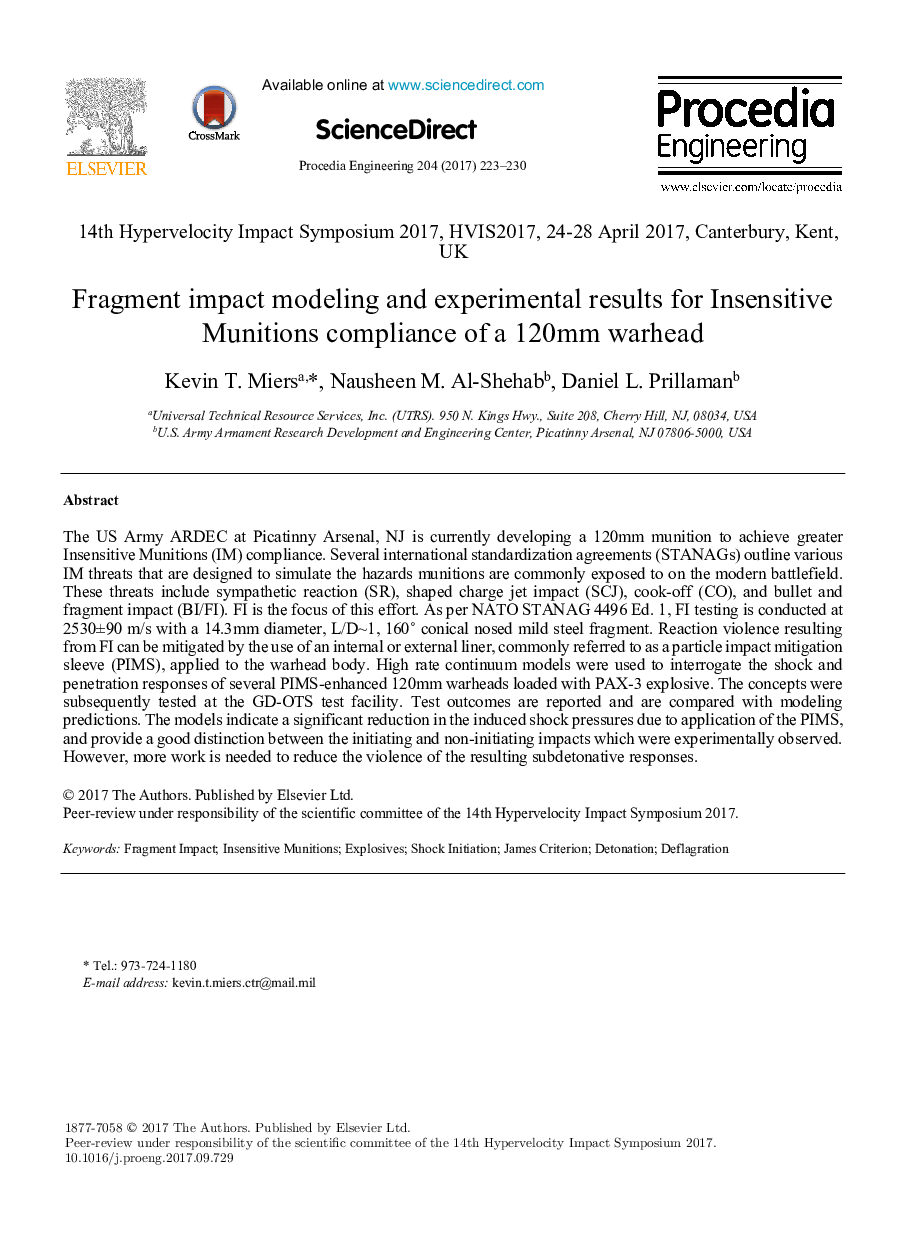| Article ID | Journal | Published Year | Pages | File Type |
|---|---|---|---|---|
| 7227927 | Procedia Engineering | 2017 | 8 Pages |
Abstract
The US Army ARDEC at Picatinny Arsenal, NJ is currently developing a 120mm munition to achieve greater Insensitive Munitions (IM) compliance. Several international standardization agreements (STANAGs) outline various IM threats that are designed to simulate the hazards munitions are commonly exposed to on the modern battlefield. These threats include sympathetic reaction (SR), shaped charge jet impact (SCJ), cook-off (CO), and bullet and fragment impact (BI/FI). FI is the focus of this effort. As per NATO STANAG 4496 Ed. 1, FI testing is conducted at 2530±90 m/s with a 14.3mm diameter, L/D~1, 160Ë conical nosed mild steel fragment. Reaction violence resulting from FI can be mitigated by the use of an internal or external liner, commonly referred to as a particle impact mitigation sleeve (PIMS), applied to the warhead body. High rate continuum models were used to interrogate the shock and penetration responses of several PIMS-enhanced 120mm warheads loaded with PAX-3 explosive. The concepts were subsequently tested at the GD-OTS test facility. Test outcomes are reported and are compared with modeling predictions. The models indicate a significant reduction in the induced shock pressures due to application of the PIMS, and provide a good distinction between the initiating and non-initiating impacts which were experimentally observed. However, more work is needed to reduce the violence of the resulting subdetonative responses.
Related Topics
Physical Sciences and Engineering
Engineering
Engineering (General)
Authors
Kevin T. Miers, Nausheen M. Al-Shehab, Daniel L. Prillaman,
